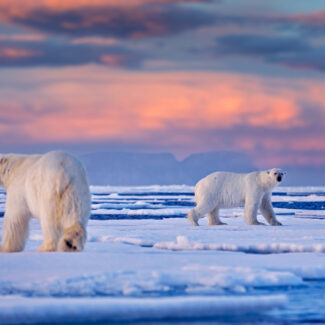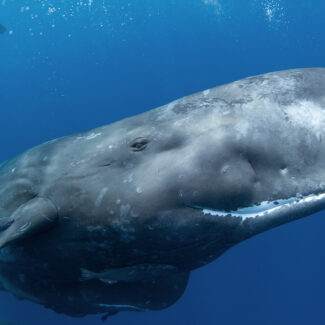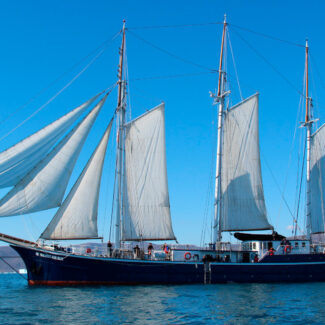Sastrugi: The Windswept Snow Dunes Of Antarctica
Antarctica is a wonderland of snow and ice formations. This is, after all, where Earth’s cryosphere—its frozen realm—finds its greatest and grandest dominion.
There are many beautiful, dramatic, even outright bizarre frigid sculptures down here at the bottom of the world. Many are large-scale, even enormous features: towering icebergs, the huge white wall of the Ross Ice Shelf—heck, the mindboggling sweep of the Antarctic Ice Sheet itself. Others, though, are much smaller formations. Among the more widespread of these are sastrugi: defining features of Antarctica, covering vast sweeps of the White Continent—especially the high Polar Plateau and sloping flanks of the East Antarctic Ice Sheet—and surrounding sea ice.
What exactly are sastrugi? Let’s find out!
Sastrugi Definition & Etymology
Sastrugi are ridges of snow formed by wind action, with steep upwind scarps that resemble prows and gentler downwind slopes. Resembling rippling, sharp-crested waves, they’re found in open, wind-exposed expanses of snow: from alpine snowpacks above treeline to polar tundra, ice sheets, and sea ice. Sastrugi are exceptionally common on the Antarctic Ice Sheet on account of the extensive fields of dry snow that blanket this polar desert and the fierce winds that rake it, none fiercer than the so-called katabatic winds that surge down off the Polar Plateau.
The name sastrugi comes from a Russian word: zastrugi, which means “small ridges.” (Sastrugi is plural; the singular is sastruga.)
The most impressive forms of sastrugi are the anvil heads, so-named on account of the extreme, undercut shape of their upwind prows.
While sastrugi is the term widely used by scientists, languages from other snowy and wind-blasted parts of the world have their own terms for these striking features: The Inuit, for example, know them as kalutoqariq.
Sastrugi & Other “Snow Bedforms” of Antarctica
Wind-shaped surfaces of snow such as sastrugi are known as bedforms. They form mainly from snow grains rolling along the snow surface in the wind—a movement called creep—and bouncing along partly airborne, aka saltation.
Some of these bedforms are formed when wind piles up snow in deposits, including ripples and various kinds of snow dunes—such as snow waves, barchans, and whalebacks—which much resemble their hot-desert counterparts found in sandscapes. But snow dunes, unlike sand dunes, quickly start undergoing a metamorphism after they’re formed: the process called sintering, in which snow grains start bonding to one another and sort of cementing together.
Sintered snow dunes can then be scoured into new shapes by the abrasive action of wind-blasted snow grains. Little cups known as pits may open up on the snow surface. And the scouring of a sintered wind slab can start forming the eroded snow dunes of sastrugi.
A sastrugi field may be oriented all in the same direction, or include intersecting or crosswise ridges. Sastrugi can suggest the prevailing direction of katabatic winds—early Antarctic explorers such as Robert Falcon Scott referenced them for wayfinding—and they often migrate downwind. Fields of rough sastrugi often alternate with flatter glazed ice surfaces, and these kinds of topographic differences can have complicated effects on wind flow as well as the reflectivity of the snow surface.
Antarctica’s powerful winds sculpt its snow into incredible “snow bedforms,” including sastrugi, creating a breathtaking and ever-changing landscape that truly defines the continent’s dynamic environment.
Sastrugi As Obstacles
While often on the order of a few inches to 1.5 feet in height, some sastrugi—such as the large ones that can be on the East Antarctic Polar Plateau and its flanks—may stand anywhere from five to 6.5 feet tall. Even the more modest-sized sastrugi form rough, corrugated snowscapes of jutting crests and intervening furrows: big-time headaches, needless to say, for polar travelers.
The annals of Antarctic exploration are full of grumbling references to sastrugi, obstructive to everything from skis and sleds to snowmobiles and tracked machines. The features have been immortalized in a few Antarctic placenames, such as Cape Sastrugi, a spur of the Deep Freeze Range in Victoria Land that the Northern Party of the British Antarctic Expedition approached by negotiating hefty sastrugi.
Antarctic Megadunes
Antarctica is the only place on Earth known to support megadunes, which have also been identified on Mars and Pluto. Specifically, Antarctic megadunes are found in the southern reach of the main ice divide on the East Antarctic Ice Sheet.
Megadunes are so-called on account they can be anywhere from six to 26 feet tall, with crests separated by a mile or more. The East Antarctic megadunes cover some 500,000 square kilometers (~190,000 square miles).
Still only partly understood by cryologists, megadunes are different from other snow dunes not only because of their enormous size, but because they’re oriented perpendicular to the direction of East Antarctica’s katabatic winds and appear to migrate upwind. Their leeward or downwind sides are characterized by a glazed crust, while their windward slopes come corrugated with large, gnarly sastrugi.
Antarctica’s colossal “megadunes” are extraordinary, windswept snow formations, often many kilometers long, showcasing the incredible power of the continent’s winds and its perpetually dynamic icy landscape.
Antarctica’s Sastrugi Kingdom
Walking a snowdrifted field close to home on the heels of a big winter blow, you might just chance upon wind-scoured grooves that, small-scale by comparison though they might be, can fire your imagination with images of the giant wilderness of East Antarctica and its seemingly endless tracts of sastrugi.
Disclaimer
Our travel guides are for informational purposes only. While we aim to provide accurate and up-to-date information, Antarctica Cruises makes no representations as to the accuracy or completeness of any information in our guides or found by following any link on this site.
Antarctica Cruises cannot and will not accept responsibility for any omissions or inaccuracies, or for any consequences arising therefrom, including any losses, injuries, or damages resulting from the display or use of this information.










